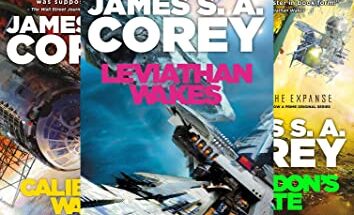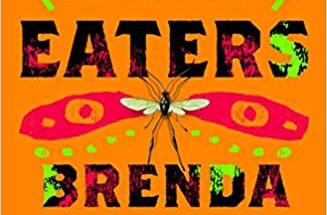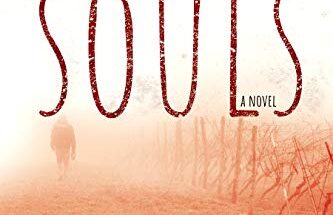Alison Stine is a poet by training, an essayist and reporter for The New York Times and other national publications, and her latest novel Trashlands comes out next week on October 26. Set in a dystopian future where discarded plastic is a commodity worth dumpster-diving for, the book centers on a community in the Scrappalachia called Trashlands which relies on prostitution and trash scavenging to stay afloat.
Told through a variety of perspectives, the book centers around Coral, a young, single mother who is separated from her son when he is kidnapped and forced into labor at a distant recycling plant. Stine is well versed in writing about climate change and poverty. Her first novel Road Out of Winter, also set in Appalachia, follows a woman placed in desperate circumstances who must rely on her green thumb to survive. I spoke with Alison recently to discuss her approach to writing fiction and the stories and craft choices behind Trashlands.
How did you first get the idea for Trashlands? Where did this story begin for you?
This book came about because I’m a single mom and I always try to go somewhere when I am alone to write. During my son’s summer break, I stayed alone in a school bus in upper Michigan that had been turned into an AirB2B. I had trouble sleeping at first and I started thinking about another single mom as a character. She was an artist and hadn’t seen her son in a long time. That’s Coral. Waking up in that bus for a week impacted me. I got to thinking about what it would be like to live in a tiny house and started thinking about how much space does one person really need to live?
Although Coral came to me first, while drafting it became clear that this story needed multiple points of view. I wanted to show multiple journeys. I wanted to show how a journey is about more than just where you end up. You can make a place that is difficult home and there is a community being built. I’ve never been a big plotter, but with this book I had lots of notecards to keep track of each character’s journey.
Tell me about your approach to world-building.
The world came from growing up where I did in Ohio – rural Appalachia has a lot of the woods, and a lot of compounds. People let some things go and they have a junk pile, burn pile, trash pile. I started thinking about that very wild, very rural and left behind places that many people in the country don’t get to see.
What did you do to ground it so well in a future with significant climate change?
I had to research a lot about plastic. My editor and I both became very educated on plastics. What floats and what doesn’t. What you can’t reuse and what would last 50 to 100 years. Some of that is in my brain and not on the page because it got very detailed – but it was useful to know.
Another thing that I really had to think about was a big flood. While the details of when and where the flood takes place are not really spelled out in the book, I had to know. You don’t exactly know how old everyone is and that’s on purpose. But I had to think a lot about who was alive during the flood and what they would remember. It was really fun, but in revisions it drove me mad to double check and make sure any changes I made, still fit with the timeline.
It was really important to me that all the characters had different back stories. They all reacted to the climate change and I wanted that to show up in who they were now and what they were doing, so that a broad spectrum of perspectives was represented.
One of my favorite things about this novel is how you incorporate work. Nearly all the characters have jobs and we get to see the contributions they make to the community and their attitudes towards their careers. How did you think about character building and jobs?
In contemporary fiction, we don’t always see how the character buys food. I wanted to talk about that. Even though this is set in a dystopia, they still need money. I wrote this well before the pandemic but it is something I continue to think about. We still have to make money even though it feels like the world is burning down around us. At the end of the world, you still have to eat.
You capture some things that are universal about parenting. Coral as a mom, but also the paternal figure of Mr. Fall. What was important for you to include in portraying parenting under such dangerous circumstances?
Before this, I resisted writing about motherhood. As someone who’s not a man, you can get pigeonholed into certain types of writing. Parenthood and motherhood are big experiences and aren’t always positive all the time. It’s hard. You don’t always have a choice. It doesn’t always go how you hoped. I wanted to portray what it was like to live with a choice you didn’t make. How you can feel a fierce love and make your life meaningful and beautiful – even in those circumstances. Coral doesn’t have strong women in her life and she becomes a mother when she is really young. All of that was important for me to incorporate.
My early readers loved Mr. Fall. He is a nurturer but not a biological parent. I wanted to show different sides of masculinity and demonstrate how love can take many forms. My mom was a second grade teacher and used to stock the classroom with food for her students. That’s something I gave to Mr. Fall to show the kind of caring teacher he is.
What advice to you have for other writers of speculative fiction?
Genre is something I’ve struggled with. My MFA is in poetry and my PhD is in nonfiction, so fiction is one area that I didn’t study.
My advice is to write what you want. People will call it what they want to, that doesn’t matter. The story tells you how to write it. Every book is going to have a different shape. Most important thing is to choose an idea that has a story that you can live with for awhile.
Alison Stine is the author of two novels, three poetry collections and a novella. Her debut novel Road Out of Winter (MIRA / HarperCollins) was a 2020 The Rumpus Book Club selection and won the 2021 Philip K. Dick Award.



